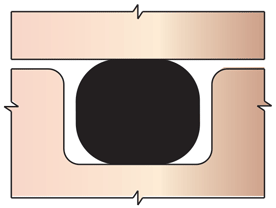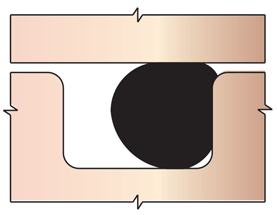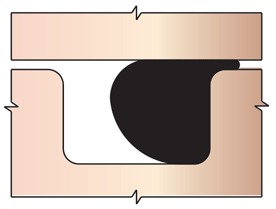O-Ring Seal Manufacturing
O-rings (or more simply, ORs) are sealing elements with a toroidal shape and a circular cross-section. Typically, their dimensional definition is given by the inner diameter and the cross-sectional diameter. O-rings can be used for static or dynamic sealing and are usually installed in hollow seats with a rectangular section.
Undoubtedly, O-rings are the most widely used type of seal: their simple and symmetrical shape, ease of manufacture, cost-effectiveness, low design costs, guarantee of single or double-effect sealing, small size, and ease of installation have allowed them to be used in a wide range of industrial and non-industrial applications.
The choice of O-ring, both in terms of size and material, depends on factors such as the operating temperature in the sealing area, operating pressure (taking into account potential water hammer effects), the chemical aggressiveness of the fluid, and the abrasion of the containment surfaces.
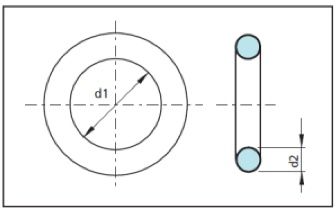
THE PHASES
Principle of operation
First phase
The seal is created when the O-ring is compressed between the two surfaces. The higher the pressure, the greater the force the O-ring exerts against the sealing surfaces.
Second phase
In the presence of pressure, the O-ring begins to deform against the sealing walls, proportionally to the pressure applied.
Third phase
As the pressure increases, the O-ring tends to extrude into the clearance between the mating parts, deforming irreversibly.
Fourth phase
To avoid extrusion phenomena, anti-extrusion rings are usually installed on the side opposite to the direction of pressure.
Technical precautions
The slightest damage makes the o-ring unsuitable for its sealing function, so it is essential to take all precautions to ensure the integrity of the seal, which could be damaged by sharp edges, threads, or burrs from machining. Dust, machining debris, dirt particles, and other impurities must never come into contact with the o-ring, as they can impair its functionality.
Both the seal and the groove must be manufactured strictly according to design tolerances: the amount of clearance between the parts is crucial for the effectiveness of the seal and the durability of the o-ring.
To avoid compromising the functionality of o-rings, it is recommended to store them in areas protected from sunlight, air, and weather, with a humidity level of 70% and a temperature between 10-20°C. O-rings should not be unnecessarily stretched, loaded, hung, or bent.
Traditional Materials
We work with all types of thermoplastic materials
Many elastomeric materials and some thermoplastic materials are used for the production of O-rings. The choice of the most suitable material depends on parameters such as the material's resistance to the fluid being contained, permanent deformation, hardness in relation to the fitting clearances, and resistance to maximum and minimum temperatures. Below are the most commonly used materials and their respective characteristics.
NBR
Suitable for contact with oils, vegetable and animal fats, anti-explosive liquids, silicone-based oils and fats, saline solutions, aliphatic hydrocarbons, glycol, air, and water up to about 80°C. Ideal for hydraulic and pneumatic systems, pumps, equipment, and machinery in general.
HNBR
Suitable for contact with animal and vegetable oils and fats, mineral hydraulic fluids based on oil, silicone oils, anti-explosive liquids, aliphatic hydrocarbons, air, and water up to about 80°C. Ideal for applications in the automotive sector.
CR
Suitable for contact with alkalis, alcohol, ozone, glycol, refrigerants; exhibits high resistance to aging and weathering, and low resistance to fats and mineral oils. Ideal for refrigerators, compressors, and outdoor equipment.
FKM
Suitable for contact with gasoline, diesel, mineral oils and fats, silicone-based oils and fats, anti-explosive liquids based on phosphates, acids, alkaline solutions, aliphatic, aromatic, and chlorinated hydrocarbons. Ideal for vacuum applications.
FFKM
Suitable for contact with most fluids and chemicals, comparable to PTFE, provides excellent chemical resistance and outstanding high-temperature resistance, even above 300°C. Ideal for chemical equipment and any environment where high temperatures and aggressive substances are present.
EPDM
Suitable for contact with organic and inorganic acids and bases, phosphate-based anti-explosive liquids, hot water, steam, detergents, brake fluids, engine coolants, ketones, alcohol; resists aging and weathering, but not mineral oils and fats. Ideal for nuclear equipment, faucets, pumps, and braking circuits.
FPM
Suitable for contact with aliphatic hydrocarbons, oils, various non-flammable hydraulic fluids; resistant to heat and chemicals. Ideal for chemical equipment, hydraulic equipment with non-flammable fluids, and high-vacuum pumps.
MVQ
Suitable for contact with ozone, oxygen, inert gases at high temperatures, ultraviolet rays, hot air, animal and vegetable fats and oils, brake fluids, aliphatic oils for engines and transmissions; has low resistance to mineral oils and excellent aging resistance. Ideal for chemical equipment, machinery for the food industry, and packaging and bottling sectors.
MVFQ
Suitable for contact with aromatic fuels, lubricants, hot air, ozone, oils, and oxygen. Ideal for chemical equipment, machinery for the food industry, packaging and bottling sectors, and aerospace applications.
PUR
Suitable for contact with mineral oils and fats, oxygen, ozone; does not resist water above 50°C, esters, aliphatic, aromatic and chlorinated hydrocarbons, acids, and concentrated alkaline solutions; has high wear resistance. Ideal for hydraulic and pneumatic systems with high dynamic loads.
FTFE virgin
Suitable for contact with most fluids and chemicals, except for alkaline metals and some fluorine-based compounds. Ideal for applications in the petrochemical, food, pharmaceutical, and medical fields (where the chemical resistance of standard elastomer O-rings is no longer sufficient).
Special Materials
Special materials should also be given particular consideration for critical applications such as cryogenics, medical instrumentation, aerospace, coating, food and beverage processing, electrical equipment, and petrochemical plants.
These include PEEK, polyamides (especially PA 6 + molybdenum disulfide and DEVLON), PCTFE, and modified PTFE loaded with glass or carbon graphite. Furthermore, elastomeric o-rings can be encapsulated with a FEP and PFA coating to ensure top-level performance. The FEP/PFA coating provides a high degree of tear resistance, a low friction coefficient, chemical inertia, and thus the potential for applications in the food, chemical, medical, and pharmaceutical industries.
BOLGARE HEAD OFFICE AND CONTACTS
HOURS OF OPERATION
OFFICE Monday - Thursday 8 a.m. - 5.30 p.m. / Friday 8 a.m. - 3 p.m.
WAREHOUSE Monday - Friday 7 a.m. - 2 p.m.
MILAN HEAD OFFICE AND CONTACTS
Via Padova 147 - 20127 Milano (MI)
+39 02 289 5156
info@limaplastics.com
HOURS OF OPERATION
OFFICES Monday - Friday 9 a.m. - 1 p.m. / 2 p.m. - 3 p.m.
WAREHOUSE Monday - Friday 9 a.m. - 1 p.m. / 2 p.m. - 5 p.m.




